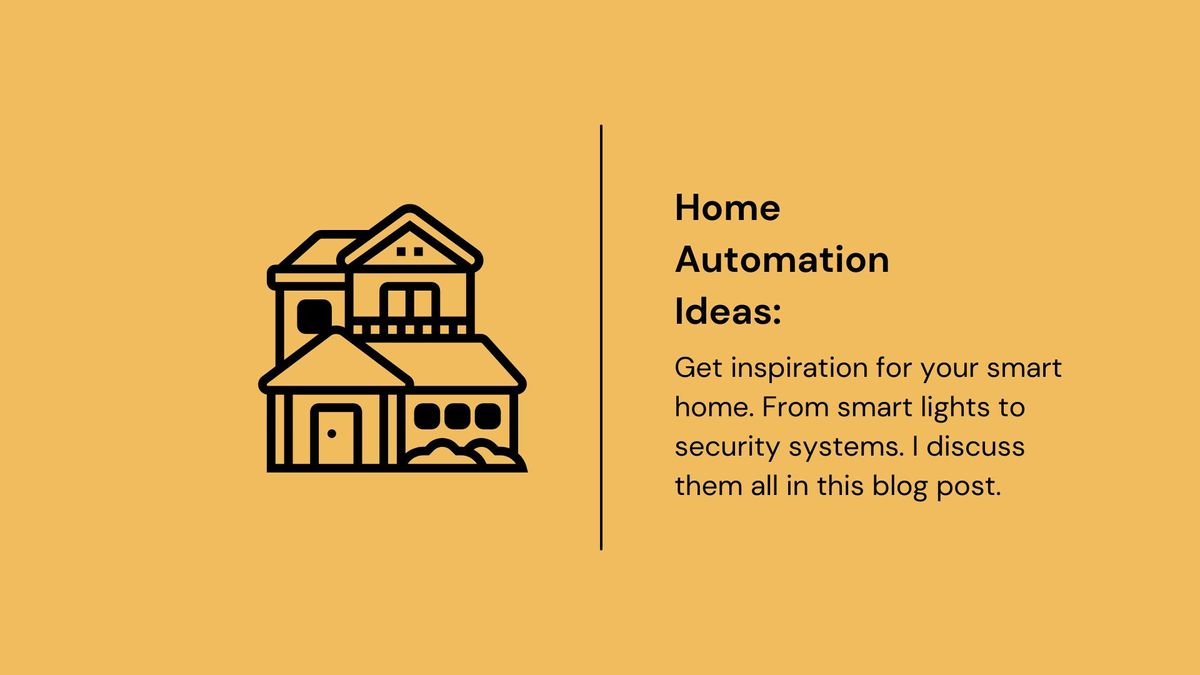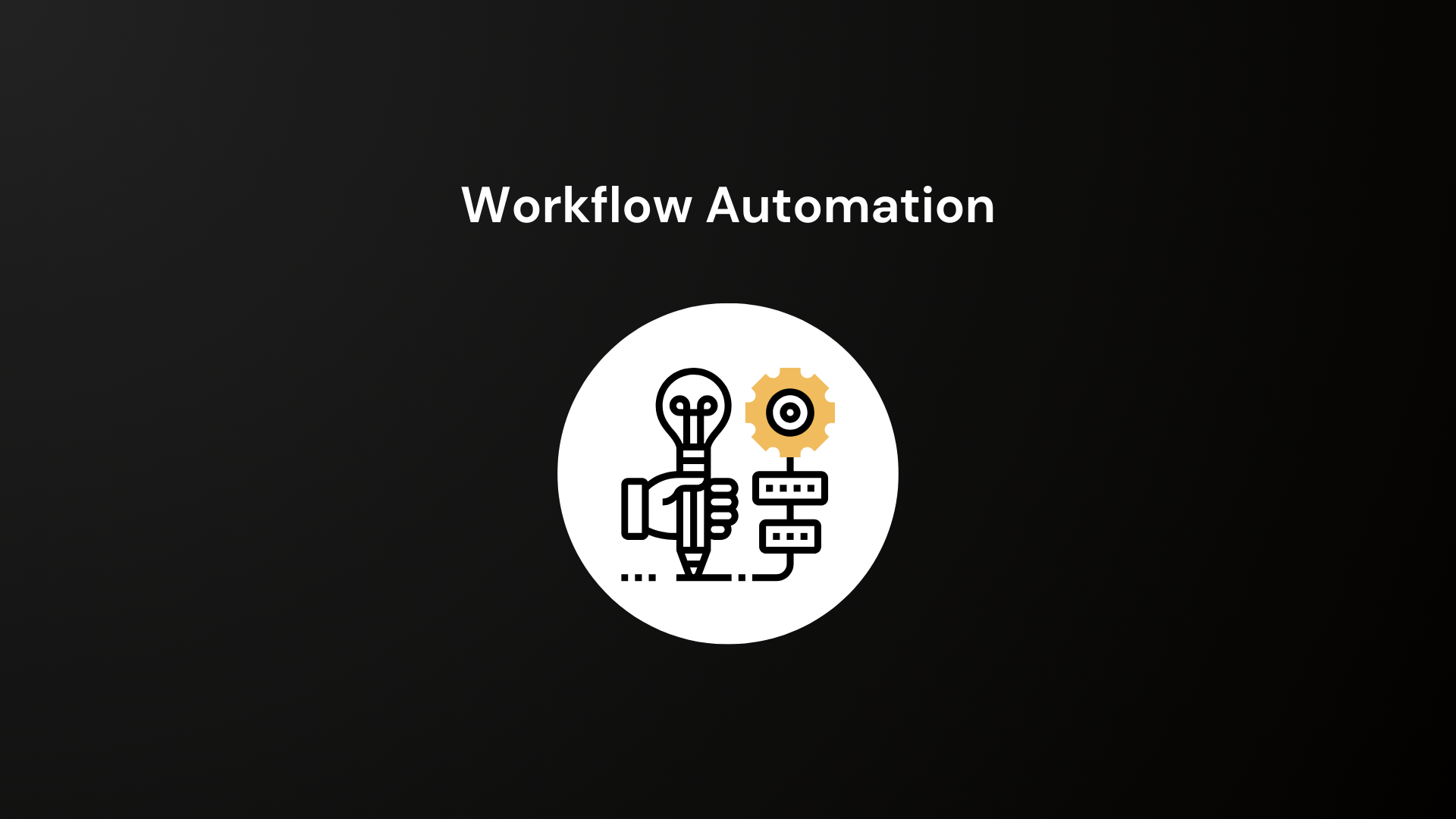Futuristic Living: 11+ Home Automation Ideas in 2023

Exploring home automation ideas can be a thrilling adventure.
One can feel overwhelmed by the sheer number of smart home systems.
In this article, I will discuss various smart home technologies that may serve as inspiration for you to transform your home into a smarter living space.
I will also share some of my personal experiences in my journey of creating a smart home.
Lighting Controls
In the realm of home automation, lighting control has taken on a whole new dimension. With innovative devices like smart light switches, night lights, dimmers, and motion sensors at our disposal, we can now manipulate light in ways that were once only possible in science fiction.
The Magic of Smart Switches
Imagine being able to command your automatic lights without having to move an inch from where you are sitting. That's exactly what smart light switches, designed as replacements for traditional wall-mounted ones, do. They connect with Wi-Fi networks, allowing homeowners remote access via apps on their smartphones or tablets.
Beyond just providing comfort and ease of use, these intelligent gadgets help conserve electricity by ensuring lights remain off when they aren't needed - think rooms unoccupied during certain hours or periods when everyone is away from home.
Dimmers: The Mood Setters
Moving beyond the basic functionality offered by regular light controls, smart dimmers allow us flexibility over brightness levels according to our mood preference, setting the right ambiance every time. These nifty tools give users the power to create various moods within a space - bright for reading or working, subdued for relaxing times.
Notably, this isn't merely an aesthetic advantage; it contributes significantly to reducing utility bills by lowering wattage use during peak consumption hours while maintaining sufficient illumination throughout the day.
I personally use these smart dimmers to control my circadian rhythm. Avoiding blue- and bright light late into the night has significantly made a positive impact on my sleep quality.
Motion Sensors: A Step Towards Intelligent Lighting
The emergence of sensor technology has enabled home automation systems to become more advanced and efficient. Devices equipped to detect movement in specified areas trigger connected lights automatically, making them ideal security features for outdoor spaces like driveways and backyards where visibility may be poor at night time.
Moreover, since they only activate when necessary, they eliminate wasteful habits of leaving porch lights switched on unnecessarily, consuming resources.
Furthermore, I'll give you a real-life example. Garage lights can be automatically turned off once you've locked your car and closed the garage door. Thus eliminating electricity costs and the embarrassment of realizing that you left the lights on the next morning...
In a nutshell, the future holds exciting prospects regarding advancements in technologies - innovations like AI-powered predictive algorithms capable of learning user behavior, enabling truly personalized experiences.
Lighting Control for Ambiance and Security
Smart lighting systems allow you to create the perfect ambiance in your home with just a few taps on your smartphone. You can adjust the brightness, color, and even schedule when the lights turn on and off. This not only enhances the atmosphere but also leaves you with peace of mind when you leave home.
Security Systems
The era of home automation has ushered in an innovative approach to securing our homes. Automated security systems not only provide a formidable barrier against intruders but also deliver peace of mind for homeowners. These smart home devices are capable of recognizing movement, activating alarms, and sending notifications to your mobile device.
Motion Detection
A central component in many automated security systems is motion detection technology. This feature uses smart sensors to pick up on any unusual activity within its range, triggering an alert or setting off the alarm when it detects movement.
In addition, some advanced models come equipped with high-resolution cameras that begin recording as soon as they sense motion providing crucial evidence should there be a break-in attempt at your property.
To make my point clear. I recently stumbled upon an Instagram video of John Jones, a professional UFC fighter.
To cut the story short:
A burglar attempted a robbery on his property at 3am while he was up playing video games. His surveillance system picked up the robbers' moves and sent a notification to Jones' phone. Whereby he reacted and chased the thief down with a shotgun.
Sounding Alarms and Sending Alerts
An effective deterrent for potential burglars is a loud siren or alarm that goes off when unauthorized access is detected by the system. The mere sound alone often scares away intruders before they manage to cause damage or steal anything from your home.
Variety Of Sensors Used In Security Systems
Apart from motion detectors, other types of sensors play a significant role in making these automated solutions more reliable and efficient:
- Contact Sensors: Usually placed on doors and windows, contact sensors trigger an alarm whenever their magnetic field gets disturbed due to opening/closing actions without authorization.
- Glass Break Detectors: As the name suggests, these devices raise alarms upon detecting sounds associated with glass breaking, thus offering added protection against forced entry attempts.
- CO2 & Smoke: Leveraging smart technology for safety purposes isn't just limited to preventing thefts; CO2 and smoke early detection can help prevent fire hazards too. You may choose one type over another based on specific needs, but having multiple kinds working together provides comprehensive coverage around your house.
Home Entertainment
The realm of home entertainment has undergone a remarkable transformation with the advent of automation technologies. Gone are the days of having to manually run audio and video systems - they have been replaced by an automated home entertainment experience that can be managed from any part of your residence.
Automated Audio Systems
Always wanted to have a multi-room audio setup?
A multi-room audio system has the capability to send different songs to various smart speakers, while also being able to play the same song throughout the entire house. Whether you're in the bedroom, bathroom, patio, or front porch.
Tip: Couple your hidden sound system with a voice controlled assistant to have maximal convenience.
Automated Video Systems
In line with their audio counterparts, automated video systems bring convenience and flexibility to our viewing habits as well. With these setups, it becomes possible to manage televisions across multiple rooms from one central location, typically through an app on a smartphone or tablet.
This technology facilitates seamless streaming of movies and TV shows onto any screen in the house, anytime. You could start watching something in the living room and then continue right where you left off later, comfortably tucked under the bed covers - no interruptions.
Incorporating AI and Automation Tools
Artificial Intelligence (AI) plays a crucial role in driving this level of smart home automation. By integrating AI tools into their entertainment setup, homeowners can enhance functionality and eliminate the need for fumbling around with remote controls.
With smart devices like Amazon's Alexa or Google Home, you can simply ask Alexa to turn up the volume during an exciting scene or request Google Home to play your favorite sitcom while cooking dinner. These intelligent assistants make it easier than ever to enjoy media content exactly how and when you want.
Zapier, a popular web-based service, offers numerous integrations between various apps commonly used in homes today, including Spotify and YouTube, among others.
Using Zapier's user-friendly interface, individuals can set up "zaps" to automate tasks related to media consumption. For example, you can automatically add new song releases from a
Appliance Control
The sphere of smart home solutions has grown beyond the confines of security and lighting. It now encompasses everyday appliances (Internet of Things), thanks to advancements in smart technology. You can remotely manage and manipulate your home appliances from any location with the help of a mobile device or tablet app.
Smart Refrigerators: More Than Just Cooling Devices
Gone are the days when refrigerators were just for preserving food items. Modern-day smart fridges come equipped with features that not only keep track of what's inside but also suggest recipes based on available ingredients. You'll even get alerts about nearing expiration dates. Some models have built-in cameras so you can check contents without opening doors - an energy-saving feature indeed.
If grocery shopping is part of your routine while out, these intelligent machines send notifications directly to your device - making forgotten essentials less likely as everything becomes streamlined for efficiency.
Sophisticated Ovens For Hassle-Free Cooking:
Some high-tech variants offer voice assistant integration like Google Home and Amazon Alexa for hands-free operation. Others provide temperature probes that automatically adjust heat settings for optimal cooking results every time.
Smart Washers & Dryers
Doing laundry has never been easier with the advent of smart washers and dryers. These appliances can be controlled remotely, allowing you to start or stop a cycle from anywhere in your home. Some models even have features that automatically adjust the wash settings based on the type of fabric, ensuring optimal cleaning results.
Energy Management
Home automation also extends to energy management, helping you save money and reduce your carbon footprint. Smart thermostats, for example, can learn your heating and cooling preferences and adjust the temperature accordingly. Remotely controlling your AC or heat when you're not at home can help you save money and reduce your carbon footprint.
Saving Energy With Light Automation
A substantial chunk of our electricity consumption can be attributed to lighting systems.
You can schedule these systems so that your lights automatically switch off at sunrise and back on as dusk falls - ensuring no light burns needlessly while you're away or asleep.
Motion sensor integration takes this up another notch by activating lights solely upon detecting movement within its range, thus conserving power whenever rooms are vacant.
Brightness control through dimmers offers further savings opportunities since lower brightness levels translate into reduced power draw.
Smart Control Of Appliances: Power At Your Fingertips
We've all had moments where we accidentally left appliances running after use. Smart appliance control presents a solution to this problem, allowing us to remotely monitor devices such as ovens and washing machines using smartphone apps like Samsung SmartThings.
No longer will you have to worry about forgetting to turn the oven off before leaving the house; now just a few taps on the screen ensure everything is switched off appropriately even if you're miles away from home.
Demand Response Programs & Peak Hours Automation
Demand response programs represent an innovative approach wherein utility companies offer incentives (usually in the form of discounts) to customers willing to curtail their usage during periods of high demand (commonly mid-afternoon). Homeowners equipped with automated setups stand to gain significantly by participating in these initiatives.
Smart Home Hubs
A smart home hub acts as the central command center for all your home automation devices. It provides a single platform that enables you to connect and control various gadgets, regardless of their manufacturer or communication protocol.
The beauty of this is that it enhances efficiency by providing seamless integration between different systems. And with AI advancements, we are looking at homes that don't just respond but anticipate our needs.
The Role of Smart Home Hubs in Automation
Imagine juggling multiple remote controls for every automated device in your house - one for smart bulbs and light strips, window sensors, smart blinds, another for security systems, and yet another one for other appliances. That's not what we call convenient or efficient.
This problem is solved elegantly by a smart home hub. By linking these devices together into one system via Wi-Fi or other protocols like Z-Wave, it simplifies management through centralized control from an app on your smartphone or tablet.
Selecting the Right Hub For Your Needs
Picking out a suitable smart home hub starts with considering compatibility with existing devices first and foremost. Not all hubs support every protocol, so ensure that the chosen hub can communicate effectively with most, if not all, of your current tech toys.
Beyond compatibility issues, consider features such as voice assistant integration (Google Assistant/Alexa), user-friendliness interface-wise, along with local processing capabilities ensuring continued operation even without an internet connection.
Prominent Smart Home Hubs in The Market Today
- Samsung SmartThings: An extremely versatile option known for its wide range compatibility with both ZigBee, Z-Wave products and certain Bluetooth LE items too.
- Echo Plus: An Amazon product equipped with built-in ZigBee connectivity, allowing direct setup without the need for any extra hardware.
- HUBitat Elevation: A privacy-focused solution offering offline functionality that ensures continuous operation irrespective of internet availability.
FAQs in Relation to Home Automation Ideas
What are the 3 common uses of home automation?
Home automation is commonly used for lighting control, security systems, and appliance management. These features offer convenience, safety, and energy efficiency.
Which things can be automated in a home?
In a smart home setup, you can automate lights, appliances like refrigerators or ovens, entertainment systems like TVs or speakers, and even your heating/cooling system.
What is a real-life example of home automation?
A practical example of home automation could be having your lights dim automatically at sunset or your coffee maker start brewing at a set time every morning.
Is it a good idea to have home automation?
Absolutely. Home automation not only provides comfort and convenience but also enhances security while potentially reducing energy consumption and costs.
Conclusion
Exploring home automation ideas has opened up a world of possibilities.
We've seen how smart lighting can transform our living spaces.
Automated security systems have shown us the future of home safety and peace of mind.
We've delved into the convenience brought by appliance control and energy management, saving time and money in our daily lives.
The power of integrating all these through smart home hubs is simply amazing.
All these insights bring us to one conclusion - embracing a smarter lifestyle with home automation is not just about technology, it's about enhancing comfort, efficiency, and security at home.
If you're ready to dive deeper into this exciting realm or explore other new technologies that can simplify your life even if you are not from an IT field...
...where we continue to unveil more fascinating tools like AI Tools, Zapier, IFTTT, or Integrately that can help turn your tech dreams into reality.


Comments ()